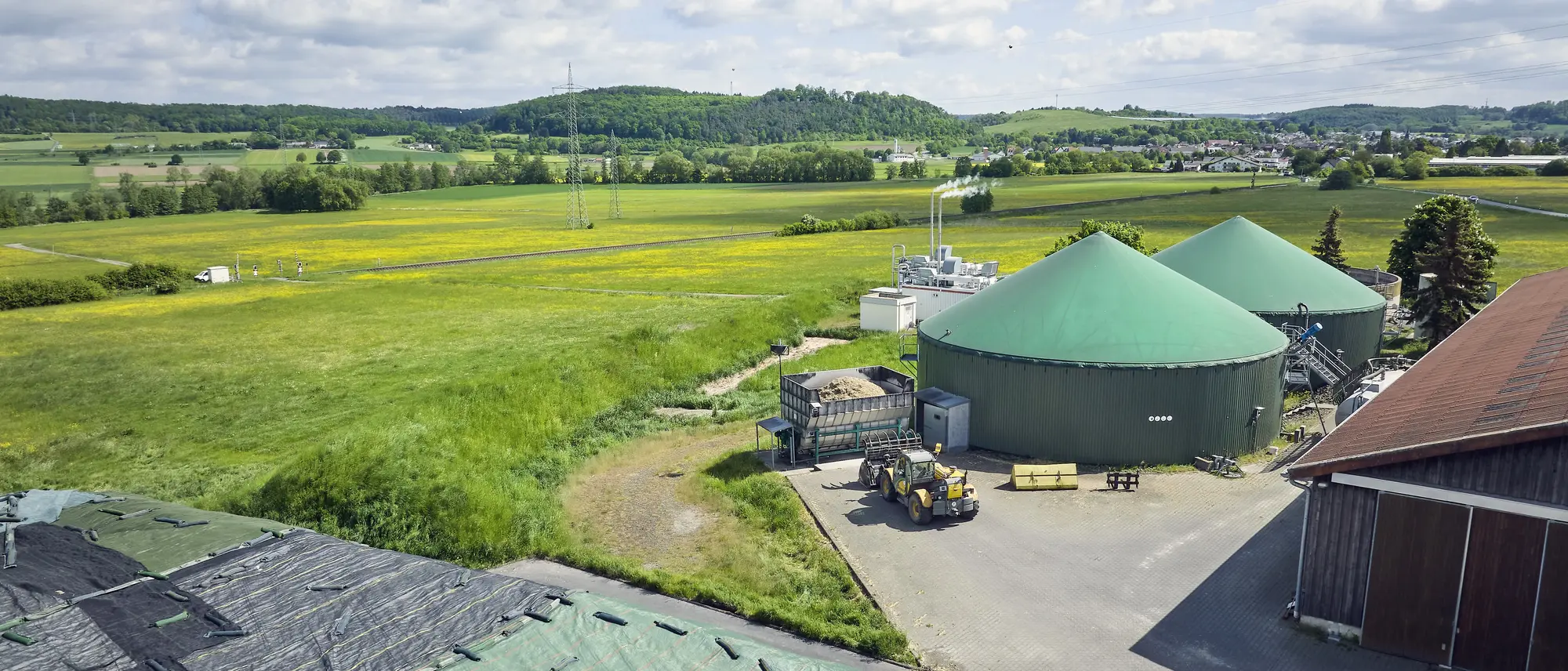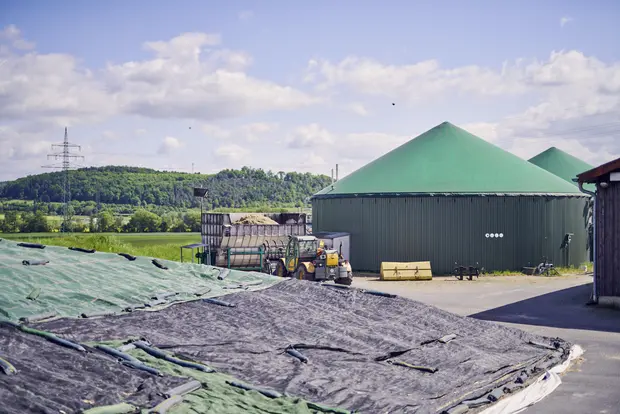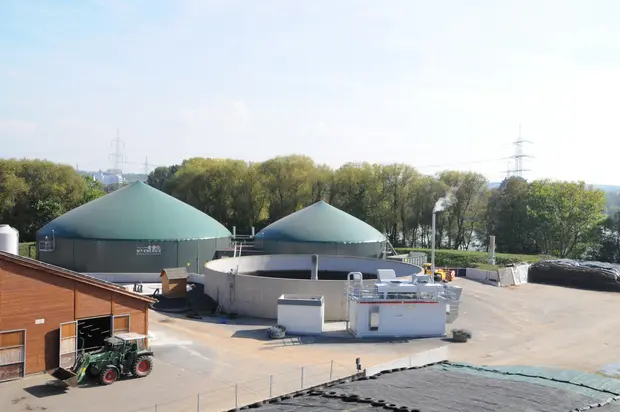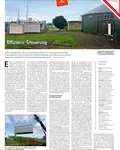Heat from biomass
The biogas plants in Großen-Buseck and Heuchelheim are key components of our in-house generation of heat and electricity. Here, locally available, regenerative raw materials are utilised as a source of energy.
In the fermenters of our biogas plants, a mixture of grass and maize silage with cattle slurry and manure is first fermented into biogas, which is then used in the biogas plant's combined heat and power plant to generate heat and electricity.




